1. SCOTS PINE, Pinus sylvestris
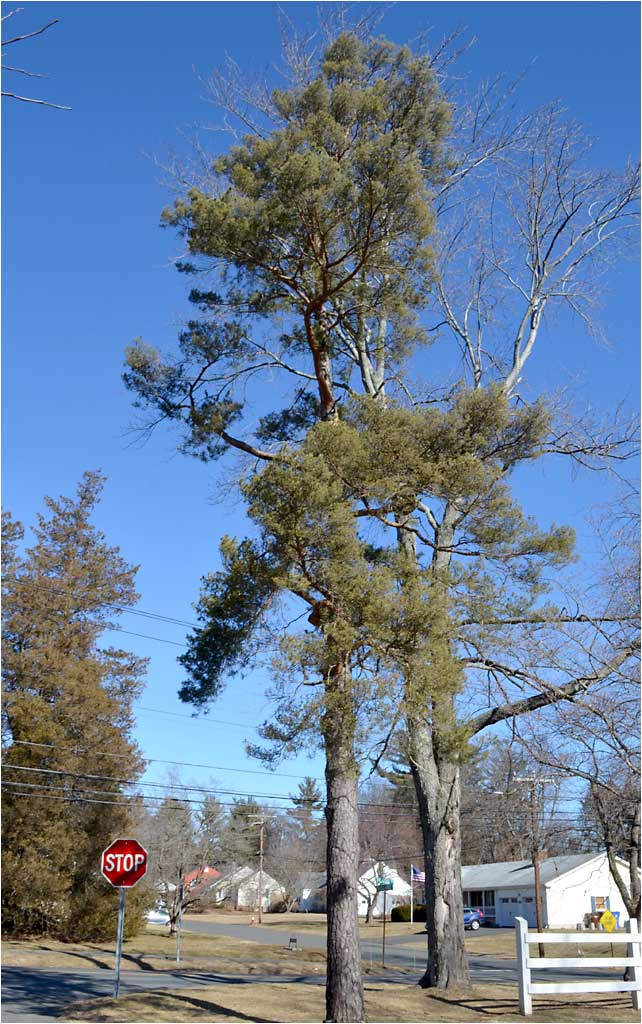
The Scots Pine is a conifer (evergreen) and keeps its needles on the tree all year long. Each needle is gradually replaced, but may take 3-4 years to do so. The tree is native to Eurasia and thrives in moderate to cold climates. The Scot's Pine is the most common pine in the world. It's native range is the Boreal Forest - an area larger than the Amazon rain forest.
Like many conifers, this species may reach a ripe old age. Up to 700+ years in its native range, 200+ years here in the US.
NEEDLES
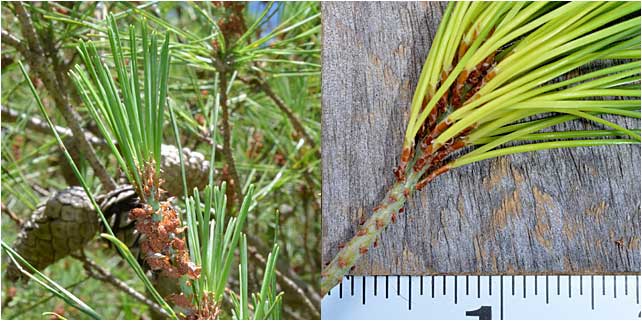
Conifers have needles instead of leaves, but they perform the same functions - turning sunlight into energy, taking in CO2, and releasing O2. Scots Pine needles come in groups of two needles which are connected to the stem by what looks like a suction cup (fascicle).
BARK
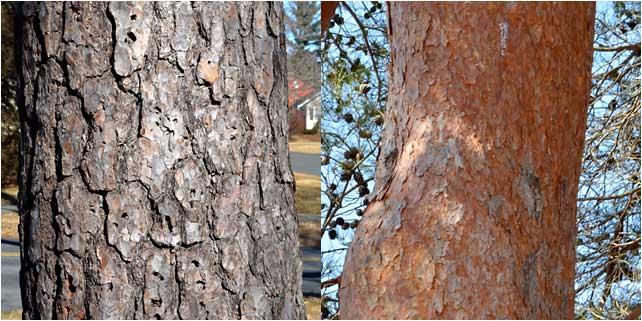
The lower portion of the tree features rough plates of mature dark bark. This thick bark protects the lower portion of the tree from damage from brush or pine straw fires. However, the thick bark does not "breathe" as efficiently as thinner bark. So the upper branches feature lighter, thinner, reddish bark. This type of bark excels at exchanging gases and vapor and helps to balance the entire tree's metabolism. This coloration is completely normal, even vital, for Pinus sylvestris.
CONES (FEMALE)
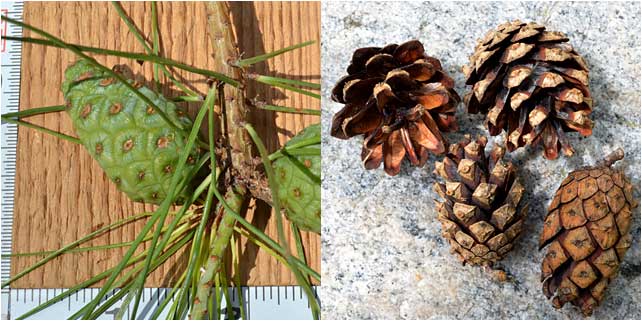
Most conifers have male and female cones on the same tree (monecious). The females begin as small red cones at the tips of new growth in spring, and then turn green during intermediate growth during first summer (left). They turn brown at maturity. Mature cones (right) may be found on trees at any time. It takes two years for a single cone to become fully mature. When the cones open, they release a winged seed to aid dispersion. Cones are app. 2 inches and circular when fully open.
CONES (MALE)
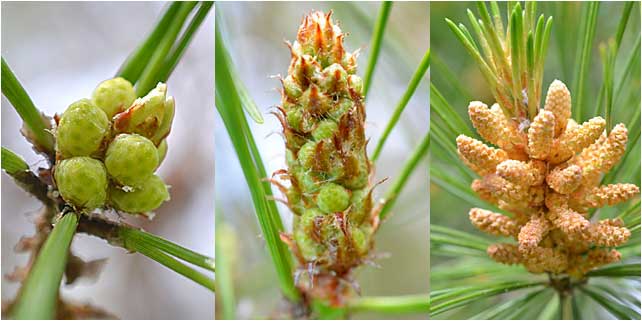
Male cones are dormant most of the year, but swell and producing pollen in April/May. They are a remarkable sight but you have to look close to see the early stage (left) in April. By May/June they are easy to spot on all trees (right).
WINTER
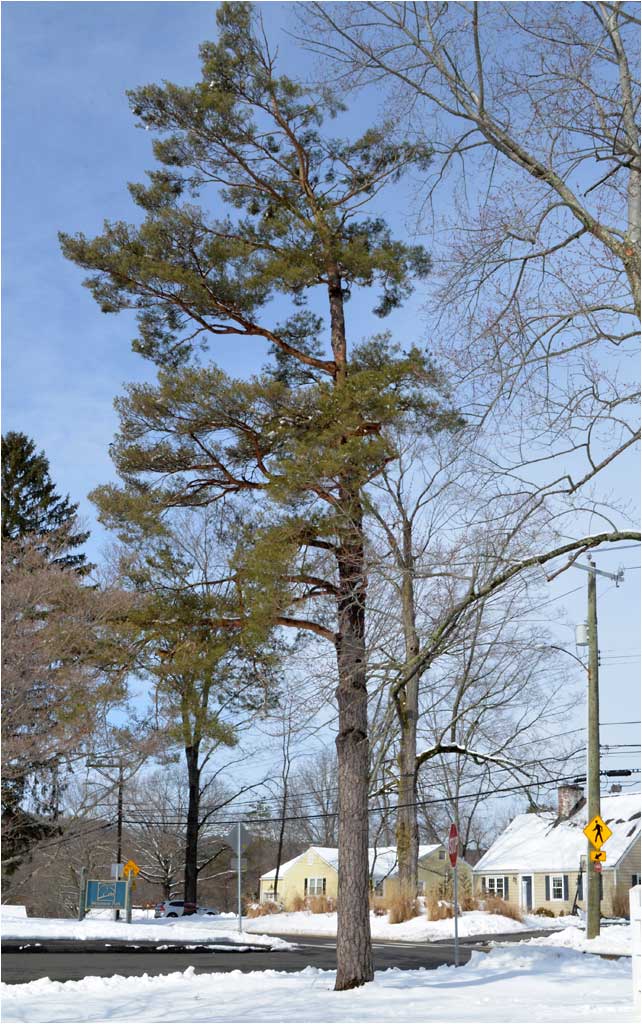
Most conifers change color slightly in winter and lose some of their vibrant green. The Scots Pine does not show this color variation and largely stays the same during all four seasons.
This Scots Pine was planted around 1950, probably by the Hunter Family (Charles and Leila Hunter donated their property to become Westmoor Park). Current DBH (Diameter-at-Breast-Height) is app. 17 inches, consistent with its approximate age and planting date.